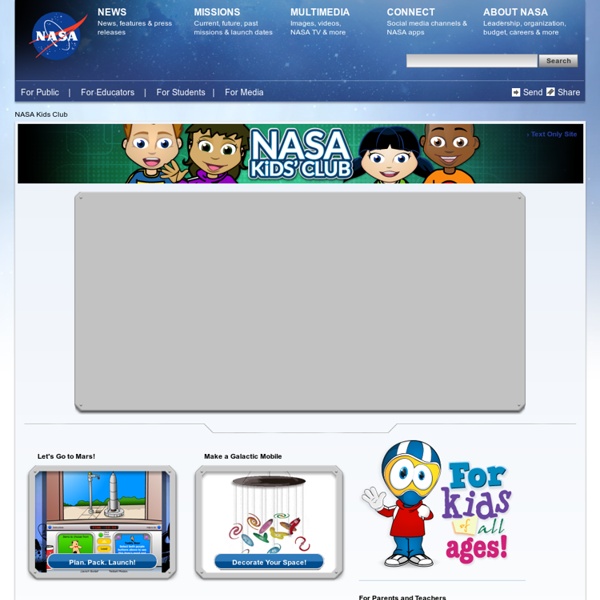Kids' Club
Skip to main content NASA Kids Club › Text Only Site Let's Go to Mars! Plan. Pack. Make a Galactic Mobile Decorate Your Space! Watch 'Ready Jet Go!' Ready Jet Go! Orion Puzzles and Coloring Sheets Print and Play. For Parents and Teachers Teach your kids and students safe surfing habits.› Children's Protection Act Learn about what you can do to protect your privacy online.›
http://www.nasa.gov/audience/forkids/kidsclub/flash/index.html#.VxrBB9EvD0M
Getting Started with Reading Bear
Quick "Getting Started" Video General Information about Reading Bear: Q & A on who Reading Bear is intended for and the thinking behind the program How to Get the Most from Reading Bear: how to use Reading Bear as part of an overall program to learn how to read What Path Should I Take through Reading Bear?: advice on using Reading Bear in particular school and home situations The Reading Bear Software: tips on how to use the system Videos of the Presentations The Interludes What is Reading Bear and who is behind it? Please see our About page for a basic summary and personnel. What age level is Reading Bear for?
StarChild: A Learning Center for Young Astronomers
The StarChild site is a service of the High Energy Astrophysics Science Archive Research Center (HEASARC), Dr. Alan Smale (Director), within the Astrophysics Science Division (ASD) at NASA/GSFC. StarChild Authors: The StarChild Team StarChild Graphics & Music: Acknowledgments StarChild Project Leader: Dr.
Partner resources
Partner resources The resources listed here were developed exclusively for our Space Place Partners. Article of the month: April 2014
Nature of Science Teaching Activities / Nature of science / Home - Science Online
The Nature of Science strand is described in the science learning area as the overarching and unifying strand. How might this influence our teaching and our choice of teaching activities? What teaching activities will help us teach the nature of science?
Space revealed
Astronomers studying space have two big problems: A lot of things in space seem invisible – they do not give out light we can see. Scientists cannot leave the Earth to go and collect pieces of stars and galaxies to study. Using different wavelengths of light
Kupe - Voyaging by the Stars
Skip to content Register Registering with NZ On Screen means you can: save favourites comment on and discuss titles receive updates via email about what's happening in the site – if you want to Register now We won't share your data with anyone (see our Privacy Policy) and we won't spam you.
Southern skies – Night sky
Southern hemisphere skies offer dazzling spectacles for night viewing, some of which cannot be seen from the northern hemisphere. Clear skies are usual over much of New Zealand, and it is possible to get fine views of the Milky Way and its neighbouring galaxies, the Magellanic Clouds. The most recognisable constellation (pattern of stars) in the sky is the Southern Cross, along with its associated features, the Jewel Box and Coal Sack. Many of the sights that are visible from the northern hemisphere can also be seen from New Zealand. The constellations of Orion and Scorpius are prominent at certain times of the year.
AstronomyNZ - Sun and Moon
The Sun and planets to scale The Sun moves from Leo into Virgo on September 17. On 23 September at 9 am the Sun crosses the celestial equator on its journey south. This is the Spring Equinox in the southern hemisphere, autumn in the north. Daylight Saving Begins at 2 am on Sunday September 29.
Resources for Teachers
Skip to main content Carter Observatory Search Resources for Teachers Carter Observatory's Resources for Teachers Astronomy Box
Related:
Students Websites
•
Astronomy
•
Solar System



